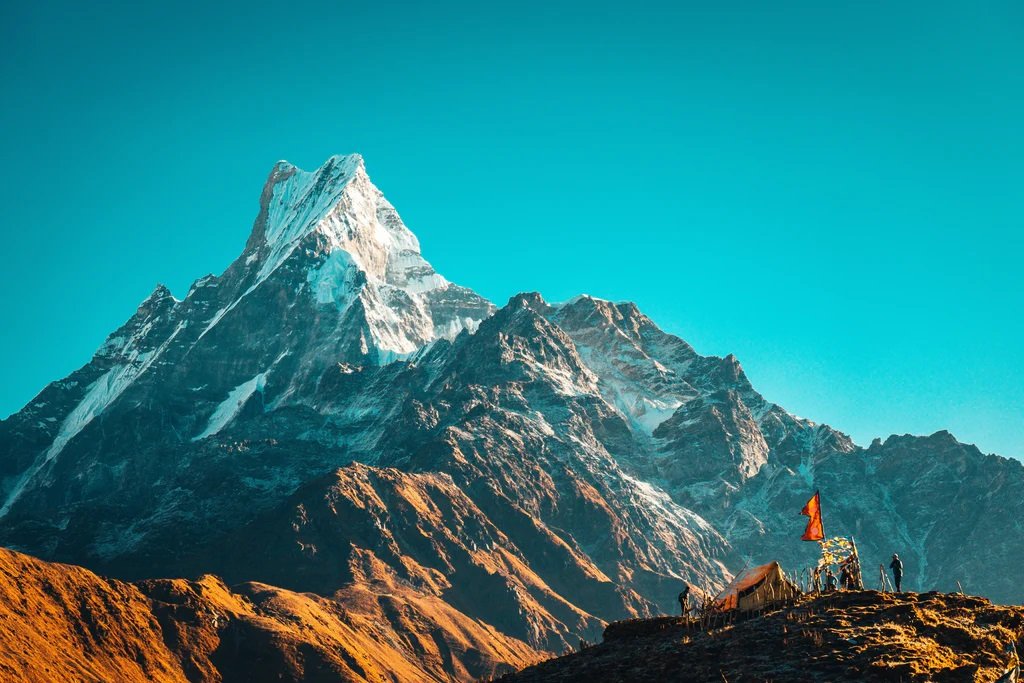The Himalayas, a vast and awe-inspiring mountain range stretching across five countries—India, Nepal, Bhutan, China, and Pakistan—are not just a physical landmark but a profound source of inspiration for regional literature and art. Known for their towering peaks, serene landscapes, and sacred significance, the Himalayas have shaped cultural, spiritual, and artistic expressions for centuries. Their influence permeates ancient texts, traditional art forms, modern literature, and contemporary environmental discourse. This article explores the multifaceted impact of the Himalayas on regional literature and art, examining how this majestic range has inspired and influenced creative expressions across different cultures and historical periods.
Historical and Cultural Significance
The Himalayas have held a special place in the cultural and spiritual life of the people living in their shadow. For many communities, the mountains are not just geographical features but sacred symbols imbued with divine significance. Hinduism, Buddhism, and various local traditions have long revered these peaks, and this reverence is reflected in the region’s literature and art. The Himalayas are often seen as a bridge between the earthly realm and the divine, embodying ideals of purity, transcendence, and spiritual elevation.
The Sacred Landscape
In Hindu traditions, the Himalayas are considered the abode of gods and sages. Mount Meru, a mythical mountain often associated with the Himalayas, is believed to be the center of the universe, a sacred axis around which the cosmos revolves. This sacred status is evident in ancient texts such as the Mahabharata and the Ramayana, which describe the Himalayas as divine realms where gods and heroes undertake significant events. The mountains are depicted as majestic and otherworldly, reflecting their role as symbols of cosmic order and divine power.
In Buddhist traditions, the Himalayas also hold great significance. The region is closely associated with the life and teachings of the Buddha. Key Buddhist sites, such as Lumbini (the Buddha’s birthplace) and Bodh Gaya (the site of his enlightenment), are located in the Himalayan foothills. Tibetan Buddhism, in particular, views the Himalayas as a symbol of spiritual ascent and enlightenment. The vast and serene landscapes of the Himalayas are often depicted as a metaphor for the path to spiritual liberation, with their towering peaks representing the journey toward higher consciousness.
The Himalayas in Religious Texts
Hindu Literature
In Hindu literature, the Himalayas are frequently depicted as sacred and divine. The Mahabharata, an ancient epic, includes numerous references to the Himalayas, describing them as a place of divine significance where gods and sages dwell. The Ramayana, another important epic, also highlights the sacred nature of the mountains, portraying them as a backdrop to the heroic deeds of Rama. The Himalayas are described in vivid terms, with their towering peaks and lush valleys serving as a setting for epic battles and divine interventions.
In addition to these epics, various Puranas and devotional texts celebrate the Himalayas as a divine realm. The Himalayas are often depicted as a source of purity and spiritual power, with sacred rivers such as the Ganges originating from the mountains. This divine association is reflected in the numerous temples and pilgrimage sites scattered throughout the region, which attract devotees seeking spiritual blessings and enlightenment.
Buddhist Literature
Buddhist literature also reflects the profound significance of the Himalayas. Tibetan Buddhist texts, such as the “Lamrim” (Graduated Path to Enlightenment) and various commentaries on Buddhist teachings, often use the Himalayas as a metaphor for the path to enlightenment. The vast and pristine landscapes of the Himalayas symbolize the clarity and purity of the enlightened mind. The mountains are depicted as a place of retreat and meditation, where practitioners can achieve spiritual insight and transcendence.
In addition to their symbolic role, the Himalayas are also featured in historical accounts of Buddhist pilgrimage and monastic life. Texts detailing the travels of Buddhist monks and scholars often describe the mountains as a center of spiritual activity, with monasteries and retreat centers nestled among the peaks. These accounts highlight the importance of the Himalayas as a site of spiritual practice and religious devotion.
Artistic Depictions of the Himalayas
Traditional Art Forms
The influence of the Himalayas is evident in various traditional art forms across the region. In Indian art, particularly in the Kangra and Pahari schools, the Himalayas are depicted with a sense of grandeur and reverence. Traditional scroll paintings often feature the mountains as majestic backdrops to scenes of divine events, pastoral life, and mythological narratives. The detailed and vibrant depictions capture the beauty and sacredness of the Himalayan landscape, reflecting the cultural and religious significance of the mountains.
Tibetan art, too, incorporates Himalayan themes and motifs. Thangkas, traditional Tibetan scroll paintings, often feature intricate representations of the Himalayan landscape, with the mountains serving as a symbolic backdrop to religious scenes and deities. Mandalas, which are geometric designs representing the universe, frequently include Himalayan elements, reflecting the mountains’ role in spiritual geography and cosmology.
In Nepal and Bhutan, traditional art forms such as wood carving, sculpture, and frescoes also reflect the influence of the Himalayas. Temples and monasteries in these regions often feature elaborate carvings and paintings that depict the mountains as sacred and divine. The art serves as a means of honoring the spiritual significance of the Himalayas and expressing cultural values.
Modern Art and Literature
The influence of the Himalayas extends into modern art and literature, where contemporary artists and writers explore new perspectives and themes related to the mountains. In literature, contemporary authors use the Himalayas as a setting for exploring complex themes such as isolation, spiritual quest, and the impact of modernization on traditional lifestyles. Authors like Ruskin Bond, whose works often depict the Himalayan landscape, use the mountains as a backdrop for stories that explore human connections with nature and the changing world.
Arundhati Roy’s novel “The Ministry of Utmost Happiness” also incorporates the Himalayas as a symbolic and narrative element. The novel weaves together themes of identity, displacement, and environmental degradation, using the mountains to reflect the broader socio-political landscape of the region. The Himalayas serve as a backdrop for exploring the personal and collective struggles of the characters, highlighting the interplay between natural and human experiences.
In visual arts, modern artists draw inspiration from the Himalayas to create works that reflect both traditional and contemporary perspectives. The dramatic and ever-changing landscapes of the Himalayas provide a rich source of inspiration for artists experimenting with various styles and mediums. From realistic landscapes to abstract interpretations, the Himalayas are portrayed as a dynamic and multifaceted subject, reflecting the complexity of human emotions and experiences.
The Himalayas and Regional Identity
The influence of the Himalayas extends beyond artistic and literary expressions, playing a crucial role in shaping regional identity. For many communities in the Himalayan region, the mountains are a central part of their cultural heritage and daily life. Traditional crafts, music, and dance often incorporate motifs and themes related to the mountains, reflecting their deep connection to the land.
Folk Art and Crafts
In regions such as Himachal Pradesh, Uttarakhand, and Sikkim, traditional crafts and artisanal practices are deeply influenced by the Himalayan landscape. Wood carving, weaving, and metalwork often feature Himalayan themes and motifs, using local materials and techniques to create distinctive and culturally significant artifacts. These crafts not only represent the artistic heritage of the region but also serve as a means of preserving and transmitting cultural values.
Wood carving, for example, is a traditional craft in many Himalayan communities, with artisans creating intricate designs inspired by the natural environment. Carvings often depict scenes of mountains, forests, and wildlife, reflecting the close relationship between the people and their surroundings. Weaving traditions, such as those found in Bhutan and Nepal, also incorporate Himalayan motifs, with textiles featuring patterns and colors inspired by the mountains.
Music and Dance
Himalayan music and dance are integral to the cultural life of the region, celebrating the natural beauty and spiritual significance of the mountains. Traditional songs and dances often honor the mountains and their role in the community’s life, reflecting themes of nature, spirituality, and social cohesion. Festivals and rituals performed in the Himalayas frequently feature music and dance that celebrate the mountains and their cultural importance.
For example, the traditional dance forms of Bhutan, such as the Cham dance, are performed during religious festivals to honor the mountains and the deities associated with them. The dances often involve elaborate costumes and masks, representing various divine and mythological figures. Similarly, folk music in the Himalayan region often features lyrics and melodies inspired by the natural landscape, with songs celebrating the beauty and grandeur of the mountains.
The Himalayas in Contemporary Discourse
In recent years, the Himalayas have become a focal point in discussions about environmental conservation and climate change. The impact of global warming on the Himalayan glaciers and ecosystems has prompted a renewed interest in preserving this vital region. Contemporary literature and art increasingly address these issues, reflecting concerns about the environment and the need for sustainable development.
Environmental Art
Contemporary environmental art often incorporates themes related to the Himalayas, addressing issues such as glacier melting, biodiversity loss, and the impact of tourism. Artists use their work to raise awareness about the fragility of the Himalayan environment and advocate for conservation efforts. This art serves as a powerful medium for highlighting the challenges faced by the region and promoting a deeper understanding of the interconnectedness between human activities and natural landscapes.
Environmental artists may create works that depict the effects of climate change on the Himalayas, such as melting glaciers and changing ecosystems. These works often aim to evoke emotional responses and inspire action, using the beauty and fragility of the mountains as a catalyst for environmental advocacy. Through various forms of media, including painting, sculpture, and installations, environmental art engages with the pressing issues facing the Himalayas and encourages viewers to reflect on their role in preserving the natural world.
Literature on Environmental and Social Issues
Modern literature also explores the environmental and social challenges faced by the Himalayan region. Authors write about the impact of climate change, the struggle for environmental justice, and the effects of modernization on traditional communities. Through these narratives, literature engages with pressing global issues while also reflecting the unique experiences and perspectives of those living in the Himalayas.
For example, novels and essays may address the consequences of glacier melting on local communities, exploring themes of displacement and adaptation. Other works may focus on the impact of tourism and development on the environment and traditional ways of life. By highlighting these issues, literature provides a platform for raising awareness and advocating for sustainable practices.
The influence of the Himalayas on regional literature and art is profound and multifaceted, reflecting the mountains’ significance in cultural, spiritual, and artistic contexts. From ancient religious texts to contemporary creative expressions, the Himalayas have inspired a rich tapestry of cultural and artistic endeavors. Their impact extends beyond mere representation, shaping the identity, values, and concerns of the people who live in their shadow. As we continue to navigate the challenges of the modern world, the Himalayas remain a powerful symbol of both natural beauty and spiritual depth, reminding us of the enduring connection between humanity and the natural world.
Through literature and art, the Himalayas continue to captivate and inspire, serving as a testament to their timeless influence on the human imagination. Their majestic presence endures in the creative expressions of the region, reflecting both the awe they inspire and the complex relationship between people and their environment. The Himalayas, with their towering peaks and serene landscapes, remain a source of profound inspiration and a reminder of the enduring power of nature in shaping human experience.





